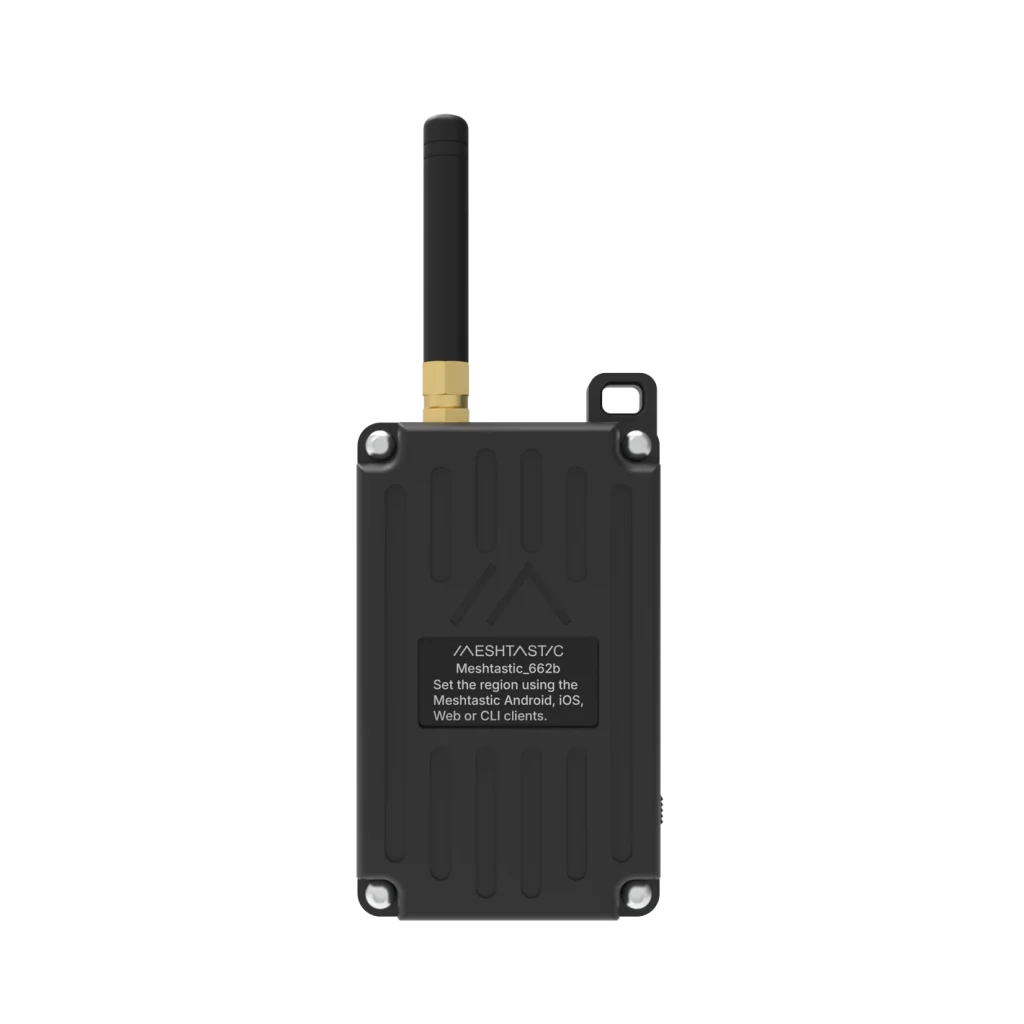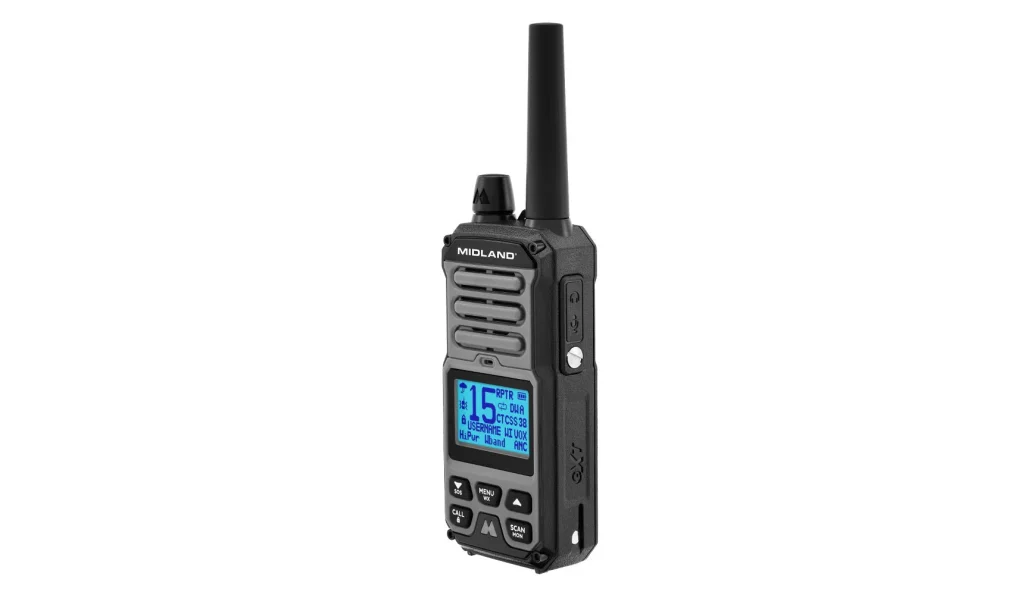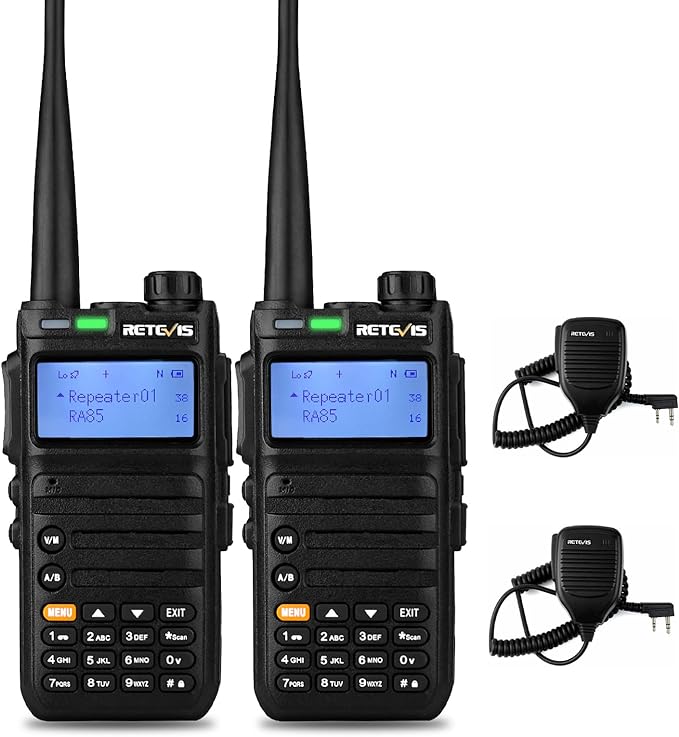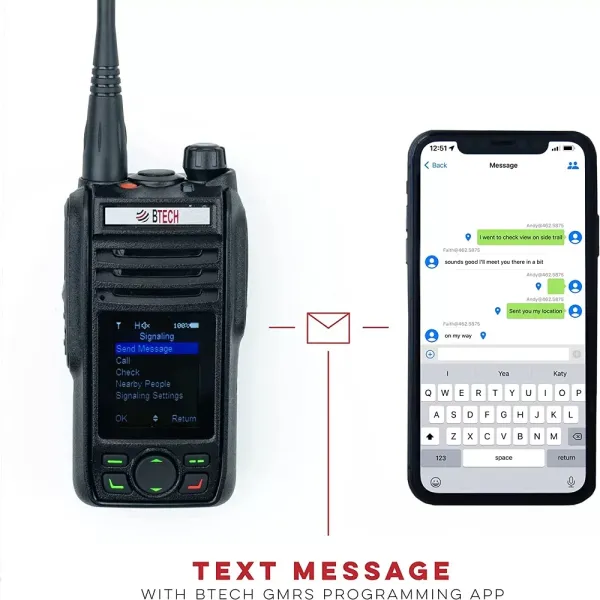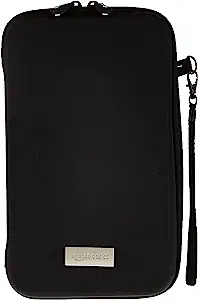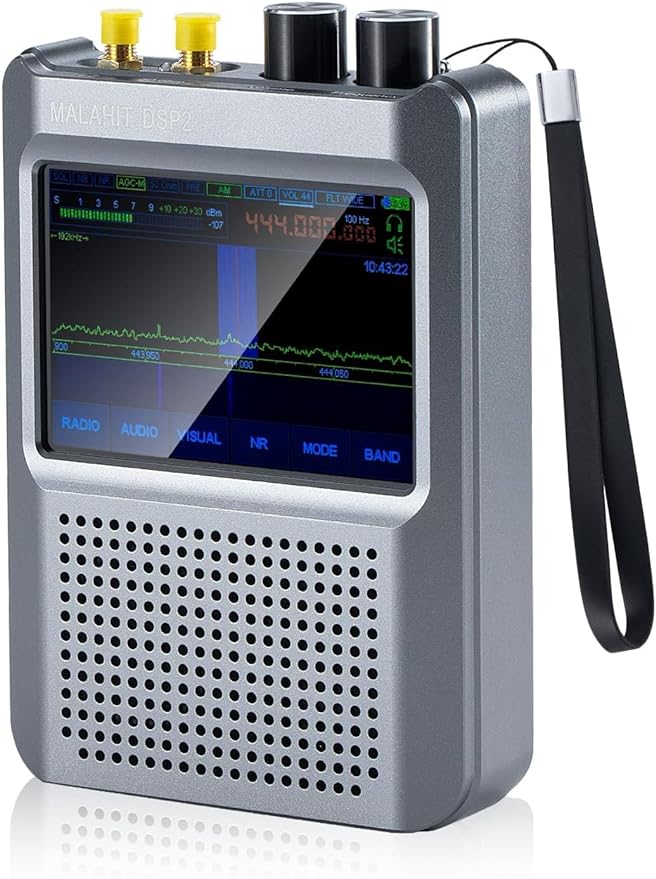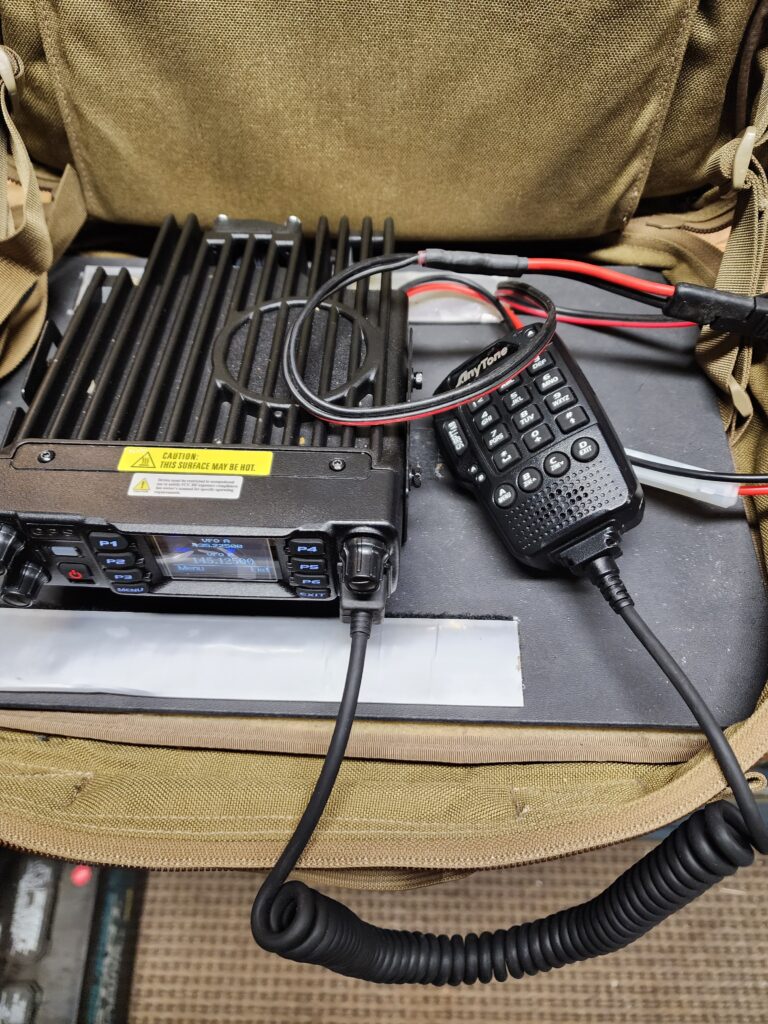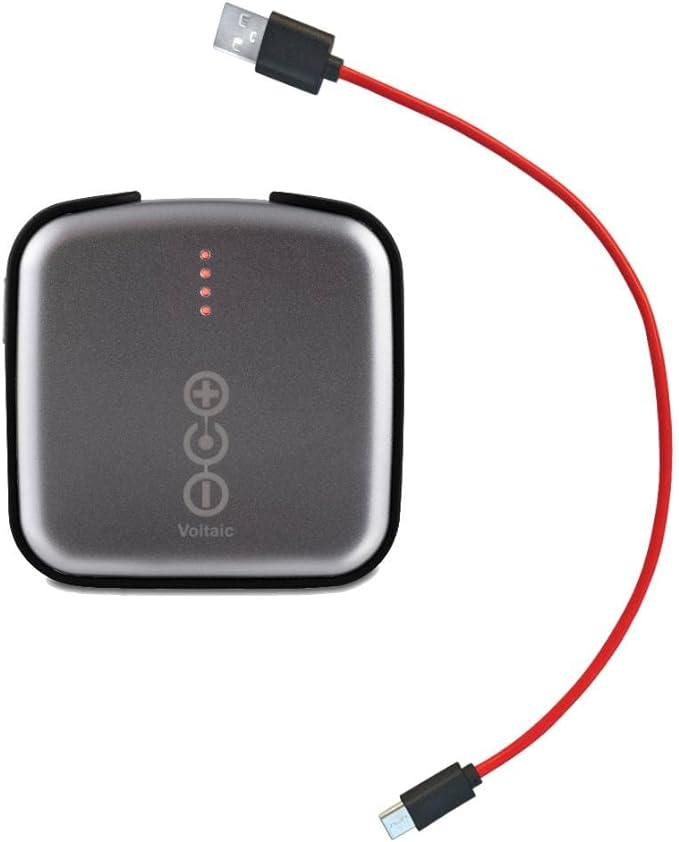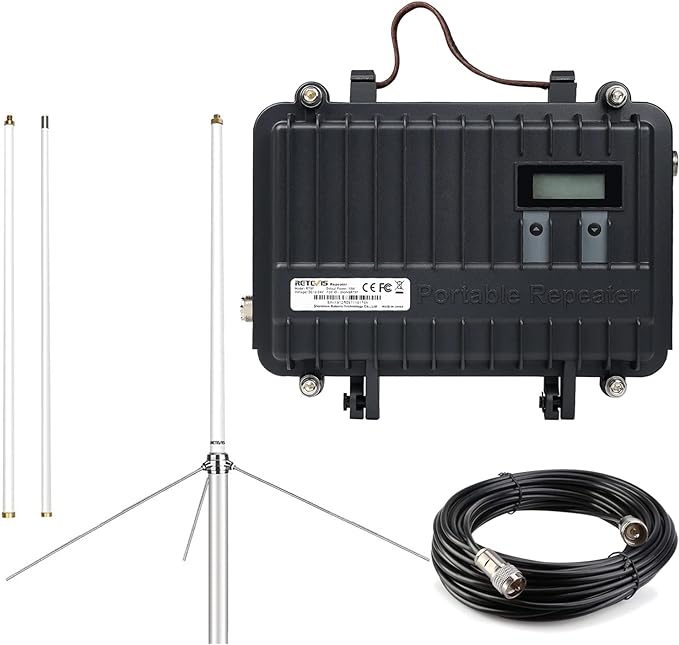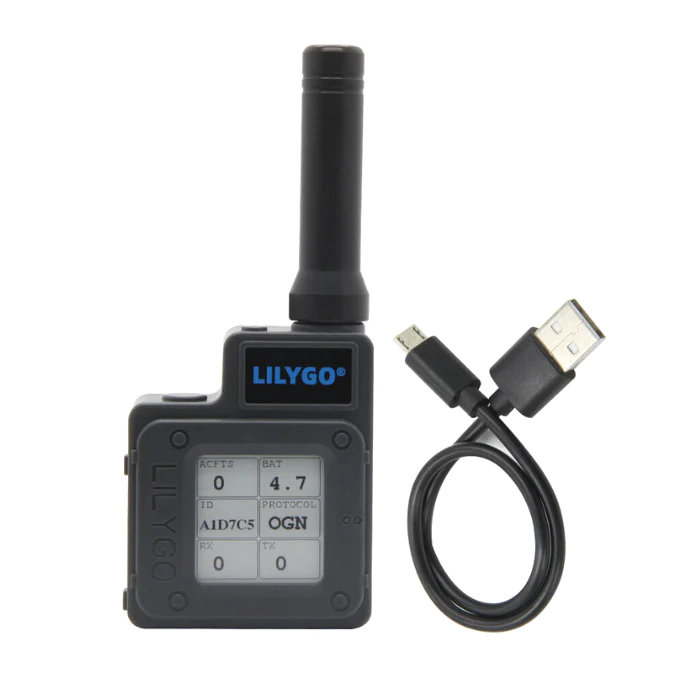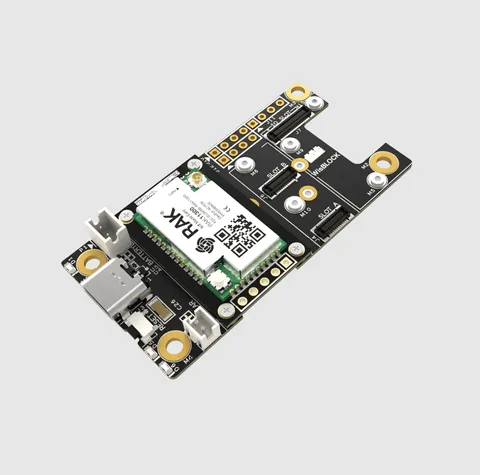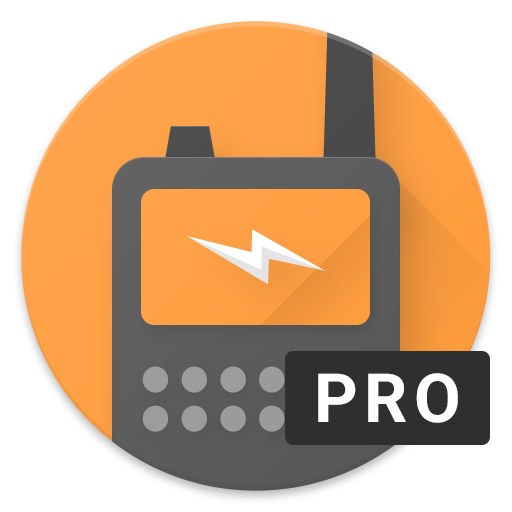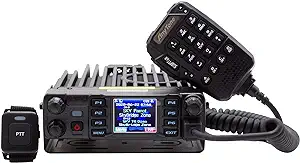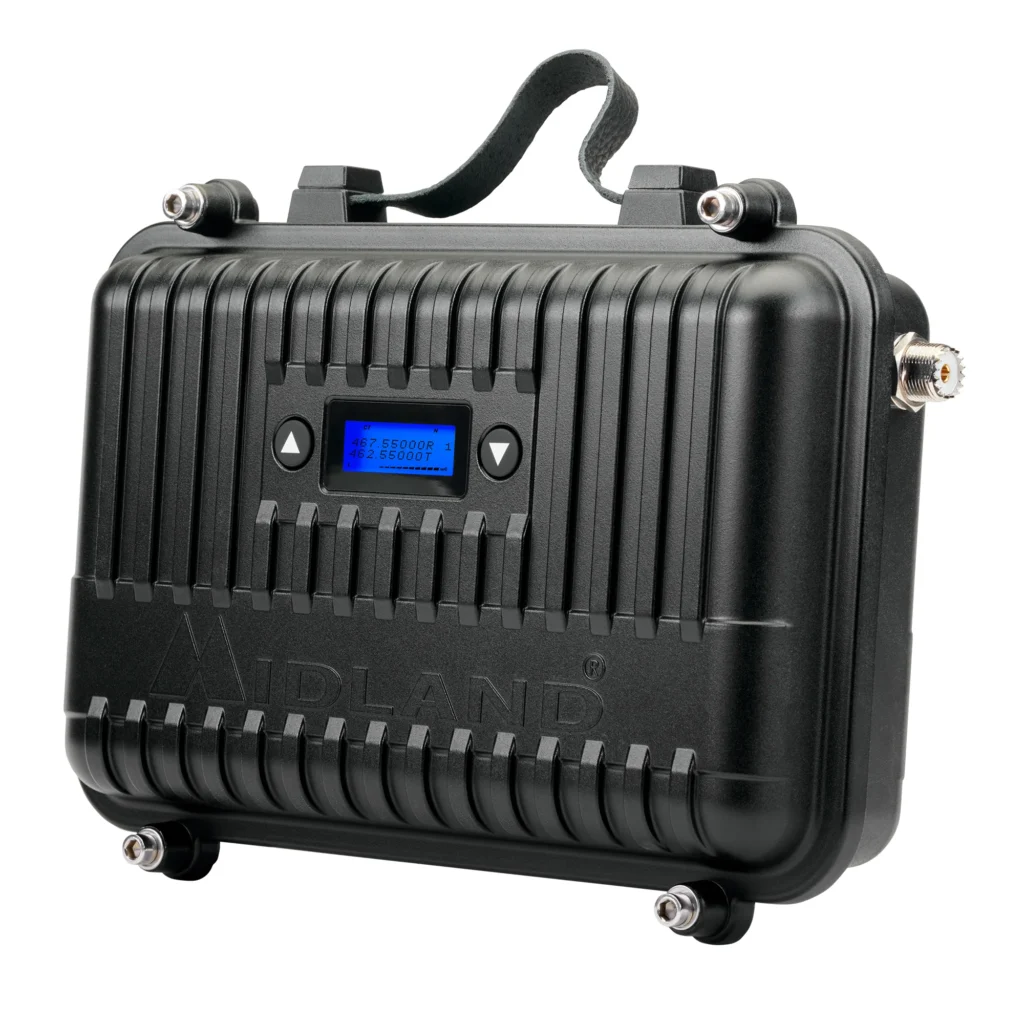Retevis RA85 GMRS Radio Handheld, Walkie Talkie Long Range Rechargeable, 2 Way Radio with Mic, NOAA, USB-C, for Outdoors Off Road Camping (2 Pack)
$79.99 on Amazon
BTECH GMRS-PRO IP67 Waterproof GMRS Two-Way Radio with Bluetooth & GPS, APP Programmable, GMRS Repeater Capable, with Dual Band Scanning Receiver (VHF/UHF); Long Range Two Way Radio
If you are looking for a outdoor 915 MHZ antenna to expand your LoRa Mesh network you should consider buying them from Rokland.
Amazon Basics Universal Travel Case Organizer for Small Electronics and Accessories
Latest V2.4 Malachite DSP2 SDR Radio Receiver Full Band Radio Receiver 10kHz-2GHz AM SSB DSB CW NFM WFM with 5000mAh Battery (Built-in Amplifier)
Emergency communication plan development questionnaire
Know Before you Go! Traveling with certain type of communication devices can get you into trouble in some countries. In today’s video I introduce some of complexities and legal considerations associated with carrying communication equipment internationally. Disclaimer Note that laws and regulations can change; always consult official sources before traveling.
Website used for reference. https://apollosat.com/
https://globalrescue.com
https://thescottishsun.co.uk
https://globalaffairs.ucdavis.edu
If you want to learn more about the Beartooth Mk II mesh radios this is the video. Stay tune my review and testing of my radios this summer.
Mesh radio communication is a network topology where each node in the network can relay data to other nodes, creating a robust and flexible communication structure. This approach is used in various technologies, including LoRa, and other waveform techniques.
- Mobile Ad-hoc Network (MANET)
- Decentralized
- self-forming, self-healing network.
- Wireless networks
- Autonomous
- Modern MANETs
- Are highly advanced and use SDR
- Can be integrated into vehicle platforms (Ground & Aerial)
- Encrypted
- Broadband
The Beartooth MKII mesh radio is a powerful communication tool designed for off-grid and emergency use, ensuring reliable connectivity when traditional networks fail. Whether you’re in the backcountry, facing a power outage, or preparing for emergencies, the Beartooth MKII enhances your communication capabilities by enabling direct device-to-device messaging and voice features without relying on cell towers or the internet.
Key Features of the Beartooth MKII:
- Mesh Networking Capability – Creates an independent communication network by linking multiple devices, extending range in challenging environments.
- Text and Voice Communication – Enables direct messaging and voice transmission even when cell service is unavailable.
- Encryption for Secure Communication – Protects your transmissions from unauthorized access, ensuring private and reliable communication.
- Long Battery Life – Designed for extended use, keeping you connected when power sources are limited.
- Compact and Portable – Lightweight design makes it easy to carry in a go-bag, vehicle, or outdoor pack.
- Works with Smartphones – Pairs with mobile devices via Bluetooth, providing an intuitive interface for seamless operation.
The interest in LoRa mesh communication is blowing up. The first place you will notice is when you go buy one online. Between the manufacture direct site or through distributors you find “out of stock” as common phase on these sites. Even if the website doesn’t say the stock beware because you may be waiting much longer than normal for your to be fulfilled. With that said, this is a good problem because there are more LoRa nodes in the network. If are lucky those nodes may be in your local area thus increasing your local network size.
In this video I make my case for purchasing GMRS handheld radios. Additionally, we discuss the future of GMRS technology. Radio manufactures are now building radio that texting and GPS location sharing feature which could really up you emcomm game.
It is time to up my game and expand my local mesh network. If you are asking yourself what a mesh network is or LoRa. Here is a short explanation. LoRa mesh networks utilize the Long Range (LoRa) technology to create a decentralized and self-configuring network infrastructure. These networks consist of numerous LoRa-enabled devices that can act as both end nodes and routers, allowing for data transmission over long distances with low power consumption. Each device in the network communicates directly with neighboring devices, forming a mesh-like structure where data can hop from one device to another until it reaches the intended destination. This mesh architecture enhances network coverage, improves scalability, and provides robustness by offering multiple communication paths, enabling reliable and efficient communication for various applications such as smart cities, industrial monitoring, agriculture, and environmental sensing.
LoRa Mesh communications offer numerous benefits that make them a compelling choice for various applications. One key advantage is their ability to create a decentralized network, eliminating the need for a centralized infrastructure like cell towers or Wi-Fi routers.
Mobile radio go bag project
I have been looking to solve a communication problem I had for some time now. I am a member of my local ARES team and a prepared-minded person. Hence, amateur radio communication equipment in my vehicles is a must. However, with multiple vehicles and teenagers that are sharing them. Permanently equipping each vehicle is impractical and expensive.
My solution is to build a “go bag” for an Anytone 578 mobile radio. Stay tuned for future updates as this project develops.
I am super excited about the possibilities of these two-way encrypted communication devices. I have added two more to my comms kit and will likely add more in the future. To learn more watch the video above and checkout meshtastic.org
Does your communication plan need encrypted off-grid? If the answer is yes, then you should check out LoRa radios (Meshtastic) devices. Learn more here and at my other YouTube channel: EmComm Solutions
Amateur radio can seem intimidating at first, but its versatility is unmatched. When it comes to emergency situations, amateur radio is nearly irreplaceable—even in today’s world of smart devices and high-tech communication networks. Unlike cell phones and the internet, which depend on infrastructure that can fail during disasters, amateur radio operates independently, making it a critical tool for emergency response and preparedness.
Key benefits of Amateur Radio for Emergency Communication:
- Operates Without Infrastructure – Unlike cell towers or internet networks, amateur radio functions independently, making it reliable during power outages, natural disasters, and other crises.
- Long-Range Communication – Can reach across cities, states, or even countries without relying on commercial networks.
- Supports Emergency Services – Ham operators provide essential backup communication for first responders when traditional networks are down.
- Portable and Adaptable – Can be used in mobile units, field operations, or remote locations where other communication methods fail.
- Community Coordination – Helps organize relief efforts, report critical information, and connect people when other forms of communication are unavailable.
- Worldwide Reach – Even when local systems fail, operators can make contact across the globe for help and updates.
- Self-Sufficient Power Options – Can be powered by batteries, solar panels, or generators, ensuring operation even during prolonged outages.
- Amateur radio remains a crucial tool for emergency communication, providing a reliable and effective way to stay connected when it matters most.
Your mobile communication equipment is only as reliable as your ability to keep it powered. That’s why building a communications support kit is essential for maintaining connectivity in emergencies. Without a reliable way to recharge your devices, even the best radios, phones, or tablets become useless when you need them most.
Key Components of a Comms Support Kit:
- Portable Power Banks – Keep extra battery packs charged and ready for your devices.
- Solar Chargers – A sustainable power source for extended outages or off-grid situations.
- Vehicle Charging Adapters – Utilize your car’s power to recharge radios and mobile devices.
- Extra Batteries – Stock up on rechargeable or spare batteries for your radios and flashlights.
- Power Inverters – Convert DC power from a car or solar system to AC for more charging options.
By building a comprehensive comms kit, you ensure your equipment stays powered and functional when you need it most.
Cell phone have become an integral part of our daily lives. In an emergency cellular service can be interrupted but not always. Additionally, cellular service companies have several clever ways to rapidly restore service after a disaster. In this video I provide some tips for using your cell phone before, during, and after a disaster.
Email to text: https://www.lifewire.com/how-to-forward-text-message-to-email-4174633
· AT&T: number@txt.att.net (SMS), number@mms.att.net (MMS)
· T-Mobile: number@tmomail.net (SMS & MMS)
· Verizon: number@vtext.com (SMS), number@vzwpix.com (MMS)
· Sprint: number@messaging.sprintpcs.com (SMS), number@pm.sprint.com (MMS)
· Virgin Mobile: number@vmobl.com (SMS), number@vmpix.com (MMS)
· Tracfone: number@mmst5.tracfone.com (MMS)
· Metro PCS: number@mymetropcs.com (SMS & MMS)
· Boost Mobile: number@sms.myboostmobile.com (SMS), number@myboostmobile.com (MMS)
· Cricket: number@sms.cricketwireless.net (SMS), number@mms.cricketwireless.net (MMS)
· Republic Wireless: number@text.republicwireless.com (SMS)
· Google Fi (Project Fi): number@msg.fi.google.com (SMS & MMS)
· U.S. Cellular: number@email.uscc.net (SMS), number@mms.uscc.net (MMS)
· Ting: number@message.ting.com
· Consumer Cellular: number@mailmymobile.net
· C-Spire: number@cspire1.com
This week’s Emergency Communication Plan video is about monitoring radio communications using devices like Scanners, Shortwave Radios, Software Defined Radio (SDR) and even your basic AM/FM radios.
General Mobile Radio Service (GMRS) is the best option for backup communications for most people. The main reasons: no test required, affordable, off-the-shelf ready, and easy to use with little to no training.
Key Features of GMRS:
- License by Registration – No exam needed; just a simple FCC registration for a 10-year license that covers the entire family.
- Higher Power than FRS – Offers more range and power than Family Radio Service (FRS), making it more effective for emergency and off-grid communication.
- Repeater Capability – Can use repeaters to extend range beyond simple line-of-sight communication.
- Wide Availability – Readily available at most outdoor, electronics, and sporting goods stores.
- Interoperability with FRS – Can communicate with FRS radios on shared channels, making it easy to integrate with non-GMRS users.
- GMRS provides a simple yet powerful solution for emergencies and everyday communication needs without the complexity of more advanced radio services.
Developing a Primary, Alternate, Contingency, and Emergency (P.A.C.E.) plan is a key step in building a reliable and resilient emergency communication strategy. This structured approach ensures that no matter what happens, you have multiple ways to stay connected when it matters most.
Understanding P.A.C.E. in Emergency Communication:
- Primary (P) – Your first and most reliable method of communication, such as a cell phone or landline.
- Alternate (A) – A backup method in case the primary fails, like GMRS or an internet-based app.
- Contingency (C) – A secondary backup that works when the primary and alternate are unavailable, such as amateur (ham) radio.
- Emergency (E) – The last resort when all other options fail, such as a whistle, signal mirror, or in-person relays.
Why P.A.C.E. Planning Matters:
- Reduces Communication Failures – Having layered options ensures you’re never completely cut off.
- Adapts to Different Situations – Covers a wide range of emergencies, from power outages to natural disasters.
- Provides Peace of Mind – Knowing you have multiple ways to communicate can reduce stress during a crisis.
- By implementing a P.A.C.E. plan, you build a strong, adaptable communication system that keeps you connected in any situation.
Today, I’m kicking off a seven-part series on emergency communication a crucial but often overlooked aspect of preparedness. Having a solid communication plan can make all the difference in an emergency, ensuring you stay connected with family, friends, and emergency responders when it matters most.
Why an Emergency Communication Plan is Essential:
- Ensures Coordination – Helps families and groups stay in touch and relay critical information when normal communication methods fail.
- Reduces Panic and Confusion – Provides clear steps to follow, minimizing stress and uncertainty during a crisis.
- Works When Networks Fail – Cell towers and internet service may be down, but a well-planned alternative keeps you connected.
- Improves Emergency Response – Helps first responders and support networks locate and assist those in need more efficiently.
A well-thought-out emergency communication plan is a simple yet powerful tool that everyone should have in place. Stay tuned for the rest of the series, where we’ll break down the best tools, strategies, and practices to keep you connected in any situation!
I have been using the Storm2 Liquid Power bank for two months now. One of the reasons I bought this was for the adjusted output voltage feature. This allows me to recharge things like Handheld Radios while in the field. I had to purchase an USB C to 5.5 x 2.1 mm adapter cable from Amazon to allow me to charge my Anytone 878 DMR HT.
Storm2 Specs:
100W PD In/Out | 27600mAh/99.36Wh | 3.3-25.2V DC Out | 2 USB-C+USB-A+DC | Airline Safe | Compact Battery Bank
Voltaic Systems V25 6,400mAh USB Always On Battery Backup Power Bank for iPhone, iPad, Samsung Galaxy, Android, and HTC Devices
The Soshine 6 Watt 5 volt panel in the perfect fit for build your next mesh node.
AnyTone AT-D578UVIII Plus Tri-Band DMR Mobile Radio
MIDLAND MXR10 REPEATER

